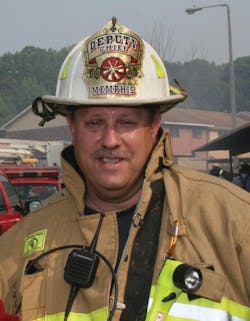EMS: EMS Near-Miss Program Website Launched
For many years, I have seen people in the EMS profession die in the line of duty in a variety of ways. Some fatalities involve helicopter crashes, some deaths result from ambulance crashes and some EMS professionals die years after incidents at which they unknowingly contracted an infectious disease.
Until now, nobody looked at these deaths collectively from a safety perspective to prevent more deaths and nobody looked at near misses, incidents at which someone almost died. I am sure departments and organizations where EMS professionals died looked at the individual circumstance surrounding each death and, hopefully, made corrections to prevent any more deaths, but who knows?
But things are looking up. A new website dealing with EMS near misses, line-of-duty deaths and errors in patient care has been launched. The National Association of EMTs’ Health and Safety Committee and the Center for Leadership, Innovation and Research in EMS worked together to develop an anonymous system for EMS professions to self-report these events.
The website is called EMS Voluntary Event Notification Tool (EVENT) and can be found at www.emseventreport.org.
The EMS reporting website joins other industries that have self-reporting and voluntary-reporting websites. Besides the fire service and the National Fire Fighter Near-Miss Reporting System, http://www.firefighternearmiss.com/, industries that have near-miss reporting mechanisms include aviation, healthcare and railroads. In 1976, the aviation industry was the first to offer self-reporting, anonymous and voluntary reporting. The success of the airline industry can be measured by the fact that there is only one fatal crash in about 4.5 million take-offs and departures. Do you remember the last time a commercial airliner went down?
The healthcare industry has three reporting websites. Those are the Association of periOperative Registered Nurses (AORN) system, the Patient Safety Reporting System (PSRS) and the Near-Miss Registry for Internal Medicine. The railroad industry uses the Confidential Incident Reporting and Analysis System (CIRAS), a confidential reporting system originally developed by the University of Strathclyde for use in the Scottish railroad industry.
Unlike the firefighter near-miss reporting website, which has only near-misses that are voluntarily reported, three types of reporting events can be found on the EMS reporting site. The site lets users report near misses, patient-safety events and line-of-duty deaths. For each event, a series of questions are answered by pulling down a selection of answers or by checking a box. Patient-safety reporting is an interesting way to identify adverse patient-care events that could possibly prevent future adverse events from occurring.
The EVENT website reports that the Institute of Medicine studied medical errors in hospitals and found that 44,000 to 98,000 people die each year as a result of medical errors, preventable mistakes, oversights and omissions. The Institute for Healthcare Improvement estimated that 15 million medical mistakes occur in U.S. hospitals each year, There is no way of determining how many medical errors are made by EMTs and paramedics in the field, but perhaps with voluntarily and anonymous reporting, we can now get a grasp of the magnitude of the problem, or the lack of a problem.
What is the goal of reporting patient-safety events? According to the EVENT website, “The goal of EVENT is to improve the systems (communication, education/training, etc.) and the processes (common/standard practices, protocols, etc.) of emergency medical care by identifying situations where a patient was potentially harmed, could possibly be harmed or when a “close call” has occurred. A “patient-safety event” is defined as any event or action that leads to or has the potential to lead to a worsened patient outcome related to the event or action; these may be related to systems, operations, drug administration or any clinical aspect of patient care. Patient-safety events also include near misses that are recognized before they actually occur.
What will happen to all the data being collected? The information will be sent to the appropriate federal agencies and state EMS offices for analysis. Trends and tendencies can be identified to prevent unnecessary deaths and injuries to EMS professionals and reduce medical errors committed on patients.
As the profession of EMS continues to evolve, another step on the evolutionary chain is the development of the EMS reporting website designed to prevent unnecessary deaths and injuries. The loss of any EMS professional in the performance of his or her duties is a tragedy. Hopefully, through the use of this website, the number of EMS professionals killed each year can be reduced to zero.
For more news and training on EMS, visit http://EMSWorld.com/.
